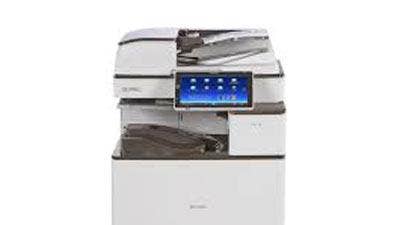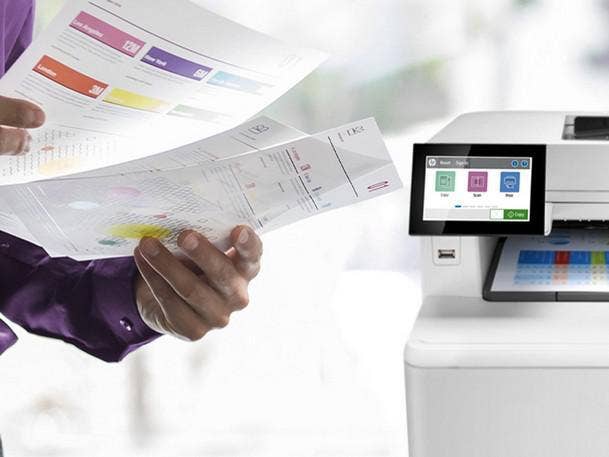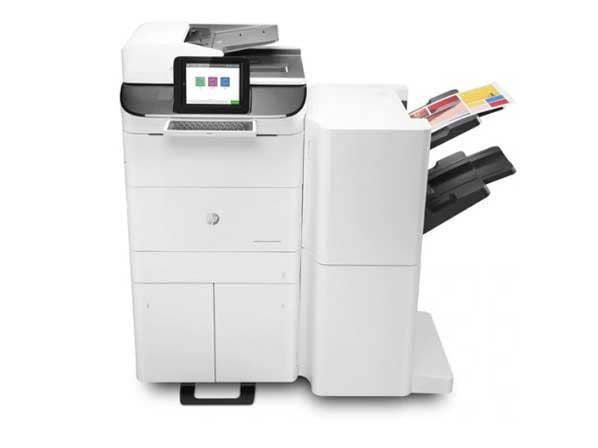5 Printer Industry Trends To Know In 2023
CRN talks to representatives at HP Inc., Epson, Brother International Corp., Ricoh, Lexmark and Xerox about the printer industry trends they’re seeing in 2023.

The printer industry has been through its fair share of disruptions over the past few years.
The disruptions began when the COVID-19 pandemic sent office workers home three years ago and, suddenly, people didn’t need printers as much.
[Related: 5 Ways Printing Is Becoming More Sustainable]
Then as concerns about the pandemic eased, organizations began opening their offices and, in some cases, instated return-to-office mandates, creating new demand for printers.
But now many businesses are facing headwinds from a slowing economy, causing more disruption for the printer industry, though the impacts aren’t being felt everywhere.
What follows are five printer industry trends to know in 2023, based on comments from representatives at HP Inc., Epson, Brother International Corp., Ricoh, Lexmark and Xerox.

Work From Home Has Changed Expectations For Printers
Ever since the COVID-19 pandemic made remote work a staple for many people, consumers and organizations have increased their expectations around how printers should work at home, according to Sue Richards, the global head of home print hardware and quality at Palo Alto, Calif.-based HP Inc.
With hybrid work becoming the norm at many organizations, enterprises want to ensure the “home work environment is as productive as your work environment,” and that means printers need to become more reliable and enable better productivity, according to Richards.
“Now the expectation is it’s just there and it just works and it’s integrated seamlessly in your environment,” she said.

Changing Office Footprints Require Printer Rethink
Organizations are making changes to their office footprints as part of new hybrid work strategies, and that can include downsizing spaces or reorganizing them. As a result, there’s an increasing need for organizations to rethink what their printer fleets should look like, which could result in fleets with fewer printers that are arranged across the office more strategically.
“If you look at what historically ratios [of printers to employees] may have been or deployment strategies, people now are looking at it differently,” said Chris White, executive director of global product strategy and product management at Lexmark.
This is opening new opportunities for printer vendors and their channel partners to perform assessments and help customers figure out the best way to tackle needs for printing, scanning, copying and faxing in modern office environments, according to Bob Burnett, director of product planning and solutions deployment at Brother International Corporation.
Burnett said these assessments can address several facets, including size of a workforce, how often they’re in the office, how many pages they print on a regular basis and whether there is an increased need for scanning due to a larger emphasis on scanning.
“Our channel partners can help those customers analyze that,” he said.
Elliot Williams, a director at Epson America, said it’s important for organizations to get printer layouts done correctly to ensure knowledge workers aren’t spending too much time walking long distances to a printer or trying to find where a printer is located.
“As manufacturing has moved offshore [and] things have become automated, knowledge workers as a percent of business becomes larger, and I think it becomes a bigger issue because you’re paying people a lot of money–do you want them spending time walking around the floor to try to get a paper?” he said.

Printer Security Is Important But More Awareness Is Needed
Printer security is more important than ever, not just to protect documents with sensitive information but also to prevent network intrusions through the printer itself. Unfortunately, not all organizations have come to this realization, according to printer executives who spoke with CRN.
“There’s always going to be more work to do because people don’t immediately think of a printer as being a conduit in, but we know it is, and so I think I think that’s something we’ll continue to drive,” said Richards, the global head of home print hardware and quality at HP.
Burnett, the product planning director at Brother International, said security concerns also extend to the physical world if documents sit on a printer tray or the scanner’s document table unattended.
“Surprisingly some organizations have not realized it until you have the conversation with them and then they start to say, ‘Oh my god.’ You don’t know how many times I’ve gone to visit customers, you walk through their office and you see documents sitting on the on the output trays of devices,” he said.
Printer security is something that should be important to all organizations, no matter their size, according to Tracey Koziol, chief product officer at Xerox.
“Security is something that you just cannot ignore, whether you’re a mom-and-pop all the way up through an enterprise,” she said.
Scott Dabice, vice president of pricing and strategic markets at Ricoh USA, said organizations also need to understand the security risks of printers at the homes of employees who work remotely.
“Most enterprises and even small businesses haven’t necessarily taken a big print policy of managing those devices. And what they’ve seen is that they have unauthorized devices that could be a security risk,” he said.

Business Slowdown Is Hurting Sales But Not Everywhere
After dealing with a slowdown in printer sales at the beginning of the COVID-19 pandemic, the printer industry is now dealing with another headwind: a slowing economy spurred by a variety of factors, including inflation and high interest rates.
Williams, the director at Epson USA, said this is mainly happening in the corporate space, where businesses have sought to pause or slow down procurement activities.
“What we’ve seen more often than we have in the past are companies that come to us about opportunities. And then they pause it, right? They’re like, ‘No, we’re going reassess this in six months or nine months,’ or ‘Now’s not the time,’” he said.
On the other hand, business is more stable with governments and public education institutions, where funding is more secure and there is an ongoing need to refresh printer fleets, according to Williams.
White, the product strategy director at Lexmark, said while back-office environments have pulled back on print demand, front-office environments like retail stores and health centers have been more resilient. So have a broader smattering of small- and medium-sized businesses.
“Our general view is that the industry page recovery is complete. We are at what people would consider […] the new normal,” he said.

Reliability And Serviceability More Important Than Ever
With many organizations adopting a hybrid work strategy, the reliability and serviceability of printers have become more important than ever. That’s because a broken printer could prove a greater hindrance for employees who are only in the office for a couple days a week.
“If I’m only in the office on Tuesdays and Thursdays and I come in on Tuesday and the print device doesn’t work, I may not be able to do my job or what I intended to do, so ensuring that we have the right serviceability around it has become another big key,” said Dabice, the vice president at Ricoh USA.
This has put a greater impetus on vendors to build sturdier printers with easy-to-replace parts. But it has also created a growing need to use predictive analytics to ensure potential problems are addressed before they bring everything to a halt.
Dabice said printer vendors have developed systems that can now automatically generate service calls or ship parts when an analytics program detects a problem.
White, the product strategy director at Lexmark, said predictive analytics will increasingly become relevant to a broad swath of organizations, regardless of whether they have hybrid work strategies.
“Irrespective of hybrid, irrespective of location, predictive will only become more and more of an important item to ensure that, quite frankly, customers are never down,” he said.